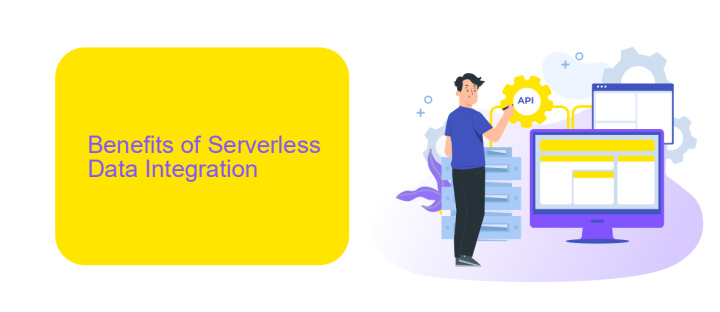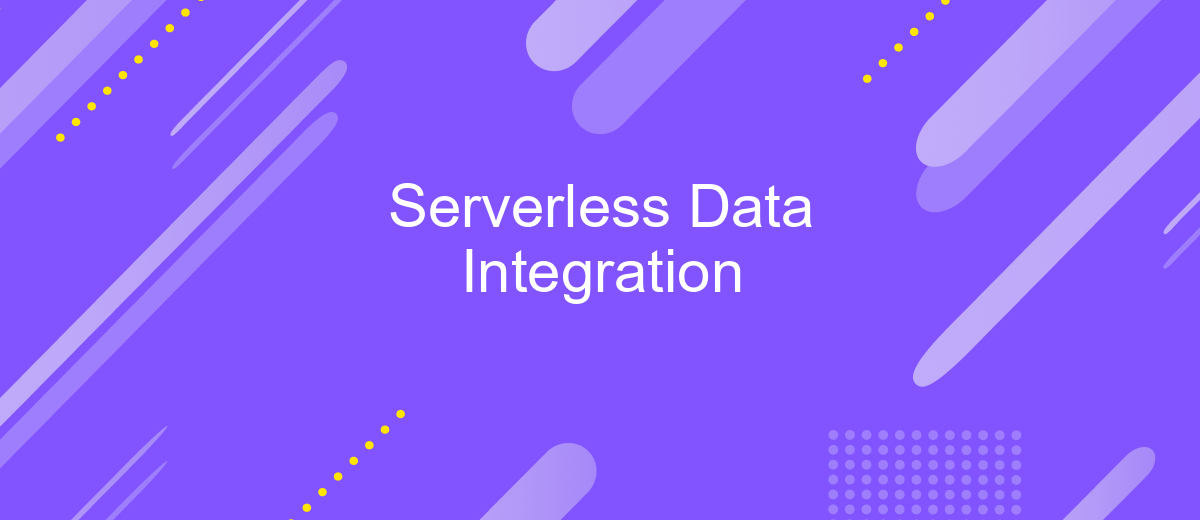Serverless Data Integration
Serverless data integration is revolutionizing the way organizations manage and process their data. By eliminating the need for server management, this approach allows businesses to focus on data insights and innovation. With the ability to scale effortlessly and reduce operational costs, serverless data integration is becoming a key component in modern data strategies, driving efficiency and agility in data workflows.
Introduction
Serverless data integration is revolutionizing the way businesses manage and process data. By eliminating the need for server management, companies can focus on the core aspects of their operations while ensuring seamless data flow between various applications and platforms. This approach not only reduces operational costs but also enhances scalability and flexibility.
- Cost-effective: No need for server maintenance
- Scalable: Easily handle growing data volumes
- Flexible: Integrate various applications effortlessly
- Efficient: Focus on core business operations
One of the leading services in this domain is ApiX-Drive, which simplifies the process of setting up data integrations. With its user-friendly interface and robust features, ApiX-Drive enables businesses to connect multiple applications without any coding knowledge. This empowers organizations to automate workflows, improve data accuracy, and enhance overall productivity. Embracing serverless data integration with tools like ApiX-Drive can significantly transform how businesses operate in the digital age.
Benefits of Serverless Data Integration

Serverless data integration offers numerous benefits, including reduced operational overhead and cost efficiency. By eliminating the need for dedicated servers, organizations can significantly cut down on infrastructure costs and maintenance efforts. This approach allows teams to focus on core business activities rather than managing servers and related resources. Additionally, serverless architectures are inherently scalable, automatically adjusting to handle varying workloads without manual intervention, ensuring optimal performance and cost-effectiveness.
Another key advantage is the speed and simplicity of deployment. Serverless platforms like ApiX-Drive streamline the process of setting up and managing data integrations. With its user-friendly interface and extensive library of pre-built connectors, ApiX-Drive enables quick and seamless integration between various applications and services. This reduces the time and technical expertise required to implement complex data workflows, allowing businesses to respond more rapidly to changing data needs and market conditions. Overall, serverless data integration enhances agility, scalability, and cost-efficiency, making it an attractive option for modern enterprises.
How Serverless Data Integration Works

Serverless data integration allows businesses to streamline their data flow without managing the underlying infrastructure. This approach leverages cloud services to automatically scale and handle data integration tasks, ensuring high availability and reduced operational overhead.
- First, data sources are identified and connected using APIs or other connectors.
- Next, a serverless function is triggered to process and transform the data as needed.
- The processed data is then routed to the desired destination, such as a database or data warehouse.
- Finally, monitoring and logging mechanisms are set up to track the data flow and ensure reliability.
Tools like ApiX-Drive simplify serverless data integration by providing a user-friendly interface to connect various data sources and destinations. With ApiX-Drive, users can automate data workflows without writing code, making it accessible for non-technical users. This enhances productivity and allows businesses to focus on leveraging their data for insights and decision-making.
Examples of Serverless Data Integration

Serverless data integration allows businesses to connect disparate data sources without the need for managing servers. This approach offers scalability, flexibility, and cost-efficiency. By leveraging cloud-based services, organizations can streamline their data workflows and improve operational efficiency.
One of the prominent examples of serverless data integration is the use of third-party platforms like ApiX-Drive. This service enables users to automate data transfers between various applications and systems without writing a single line of code. ApiX-Drive supports numerous integrations, making it a versatile tool for businesses of all sizes.
- Automating data synchronization between CRM and email marketing tools.
- Integrating e-commerce platforms with inventory management systems.
- Connecting social media channels to analytics dashboards.
- Syncing customer support platforms with project management tools.
By utilizing serverless data integration platforms like ApiX-Drive, companies can reduce the complexity of their IT infrastructure and focus on their core business activities. This not only saves time and resources but also ensures that data is consistently and accurately synchronized across all systems.
- Automate the work of an online store or landing
- Empower through integration
- Don't spend money on programmers and integrators
- Save time by automating routine tasks
Future of Serverless Data Integration
The future of serverless data integration is poised for significant advancements, driven by the increasing need for scalable, cost-effective, and low-maintenance solutions. As businesses continue to generate vast amounts of data, the demand for seamless and efficient data integration across various platforms will only grow. Serverless architectures, with their ability to automatically scale resources and eliminate the need for infrastructure management, will play a crucial role in meeting these demands. This approach not only reduces operational costs but also accelerates deployment times, enabling organizations to focus more on innovation and less on maintenance.
Moreover, the integration landscape will be further enhanced by the development of sophisticated tools and services like ApiX-Drive, which streamline the process of connecting disparate systems. By offering user-friendly interfaces and robust automation capabilities, such platforms make it easier for businesses to integrate their data sources without extensive technical expertise. As these tools evolve, they will likely incorporate advanced features like AI-driven data mapping and real-time analytics, providing even greater value to users. In essence, the future of serverless data integration promises to deliver more efficient, scalable, and intelligent solutions that empower businesses to harness the full potential of their data.
FAQ
What is Serverless Data Integration?
How does Serverless Data Integration work?
What are the benefits of using Serverless Data Integration?
How can I set up a Serverless Data Integration?
What are some common use cases for Serverless Data Integration?
Routine tasks take a lot of time from employees? Do they burn out, do not have enough working day for the main duties and important things? Do you understand that the only way out of this situation in modern realities is automation? Try Apix-Drive for free and make sure that the online connector in 5 minutes of setting up integration will remove a significant part of the routine from your life and free up time for you and your employees.


